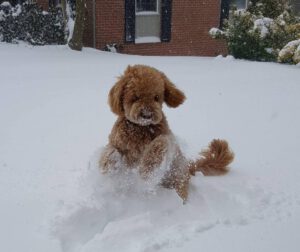Comfort Zones and Cold Feet

I love my comfort zones, as most people do. There are a few times in my life I’ve stepped out of it: when I took a ride in a hot air balloon in Botswana (I won’t do that again), or when I camped for the first time.
A few months ago, I decided I wanted to learn something new. I enrolled in a martial arts class in my neighborhood. I was nervous about taking the class for a few reasons. One was a negative experience when I took a karate class at a young age. As I remember it, the teacher repeatedly made loud corrections and focused on the negative rather than focusing on what we new students were doing right. As a consequence, I remember dreading class. I do realize that my perception of this memory may be fallible, but I also know that the teacher of my current class does not elicit feelings of dread when I attend. And I believe that has everything to do with how he teaches. The teacher instructs his students by showing and explaining proper form and technique and offers guidance when we make mistakes.
When I went to class the first time, I was really outside one of my comfort zones. Anyone who knows me knows that I am most comfortable in socks and closed- toed shoes, preferably hiking or running shoes. In this class, I need to have bare feet. At the first session, not only was I nervous about my lack of skill and knowledge, but also that my bare feet were so…bare. My thoughts during the first few classes were: my feet were cold, the floor was cold, I was uncomfortable.
After a few more classes, however, my lack of socks became less of a distraction. Class was fun and I felt more confident. I could focus on my new skills, rather than on my discomfort. It was still there, but mostly in the back of my mind. One night, a few weeks later, I realized that I had completely forgotten about my bare feet. I actually enjoyed the feeling of not having shoes and socks on. As I thought about the lack of distraction, I contemplated dog training.
When I’m teaching a dog to do something new, that dog might be outside of one of his comfort zones. The pup may not be familiar with what I am asking from him. He might give signs that he is uncertain or uneasy. But as I work with the dog and he gains confidence, he looks to be more comfortable; hesitant movements become stronger and more solid. As the pup becomes more confident in giving a behavior, distractions become less significant and the dog has better focus. Whether dog or human, we, as animals, respond to positive training the same way. Teaching with a focus on positive reinforcement fosters certainty and assurance in the one who is learning.
Because of my experience with an ineffective training method when I was younger, I avoided karate as an adult. But now, in a different learning environment, I am able to enjoy acquiring a new skill, so much so that I can let go of inconsequential distractions like bare feet. I stepped out of my comfort zone and gained some confidence. It is likely that I will step out of my comfort zone more in the future.
I want to teach what works for me as a learner. When training dogs, my goal is to get them comfortable with trying new things. They may have had a bad learning experience in the past and there may be hesitancy in learning, but training with positive reinforcement encourages the pup to step a paw or two out of his comfort zone and gain skills and confidence as a result. When training any animal, I do my best when I use reinforcement and not punishment. And when I do my best, I can ask my doggy clients to do theirs.
Lynn Webb, M.A., KPA CTP, CTMT


